This post is by Sumeyra Dursun, 2023 Heid Fellow, from her research in the Islamic Manuscripts Collection. Sumeyra is a doctoral candidate in the history of Islamic arts at Yildiz Technical University in Istanbul. See Sumeyra's other posts here.
*******************************************************************************
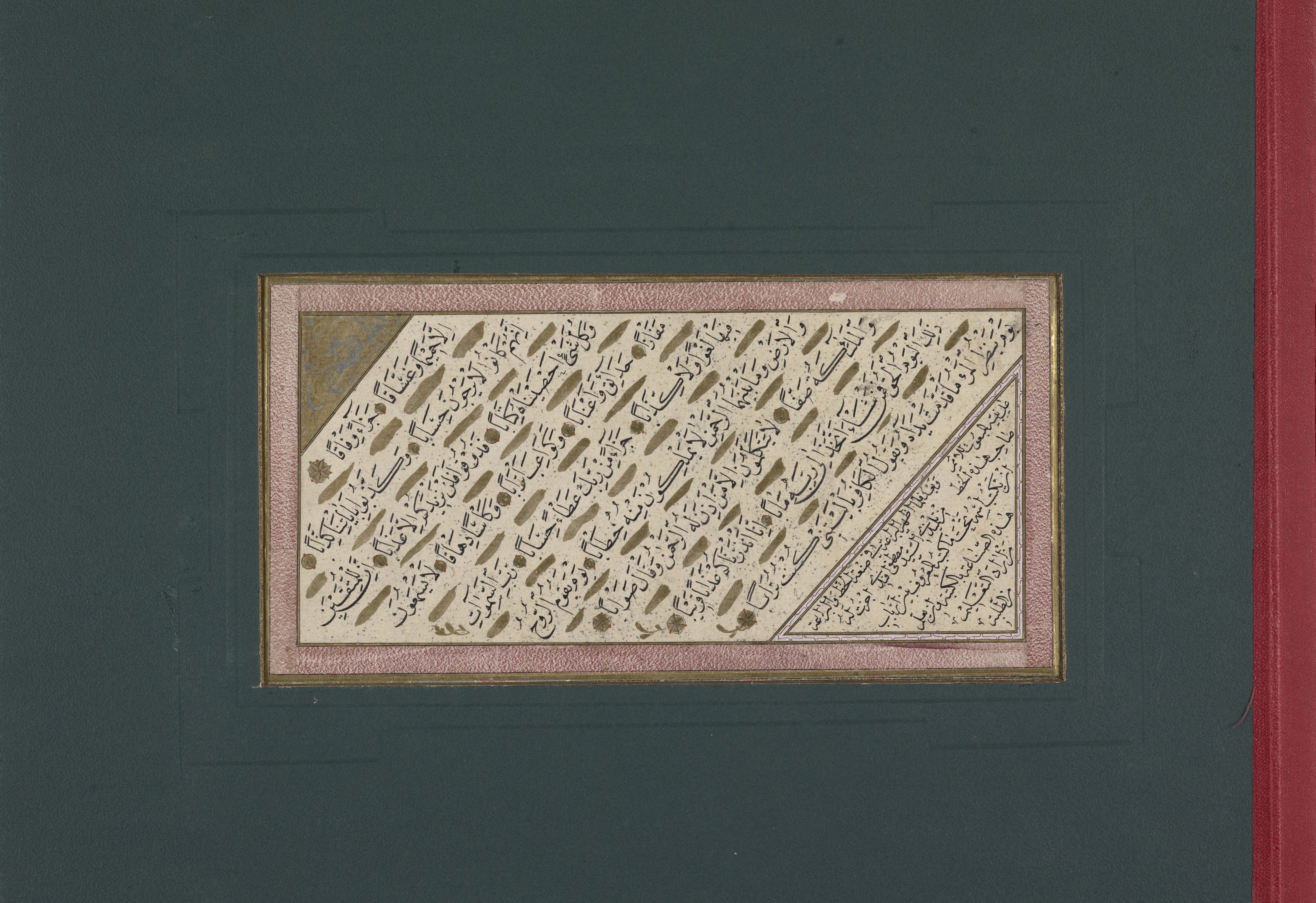
Second part of a calligraphy license or diploma (icazetname) in naskh (nesih) script, mounted as a separate piece in fol.21a in Isl. Ms. 438, Islamic Manuscripts Collection
The tradition of earning and granting permission or license (اجازة = ijāzah or icâzet) in calligraphy is believed to have continued without interruption in Islamic cultural spaces from the fifteenth century to the present day. This method has ensured the progress of calligraphy and the preservation of its procedures and principles. Since the names of the student, the masters, and sometimes even witnesses were recorded, the practice has created a very rich tradition of following artistic lineages. Thanks to ijāzah panels and treatises which served as diploma or icazetname (اجازتنامه), it is possible to assess the value accorded by Turkish-Islamic society to the art of calligraphy. Licenses have also played a role as primary sources for Ottoman calligraphic treatises such as Devhatü'l-Küttâb (دوحة الكتاب), Gülzâr-ı Savâb (گلزار صواب), and Tuhfe-i Hattâtîn (تحفه خطاطین).
The process leading to earning an ijāzah — usually for a particular script or scripts — consists of a student learning from their master by first writing the letters one by one (مفردات = müfredât) and then joining two or three letters together in the form of words and sentences (مركّبات = mürekkebât). They may then write out a longer piece of poetry, verses from the Qur'an, or sayings of the Prophet Muhammad, depending on the script. After this they may be granted the ijāzah — permission or authorization — to sign their own work. Although there are differences in the phrasing and form of the permission sentence, it is usually some version of the following: "I have given permission to so-and-so, who wrote this delicate and beautiful panel to record his/her name under what he/she has written. May God prolong his/her life and increase his/her art and skill. And I am his/her teacher so-and-so."
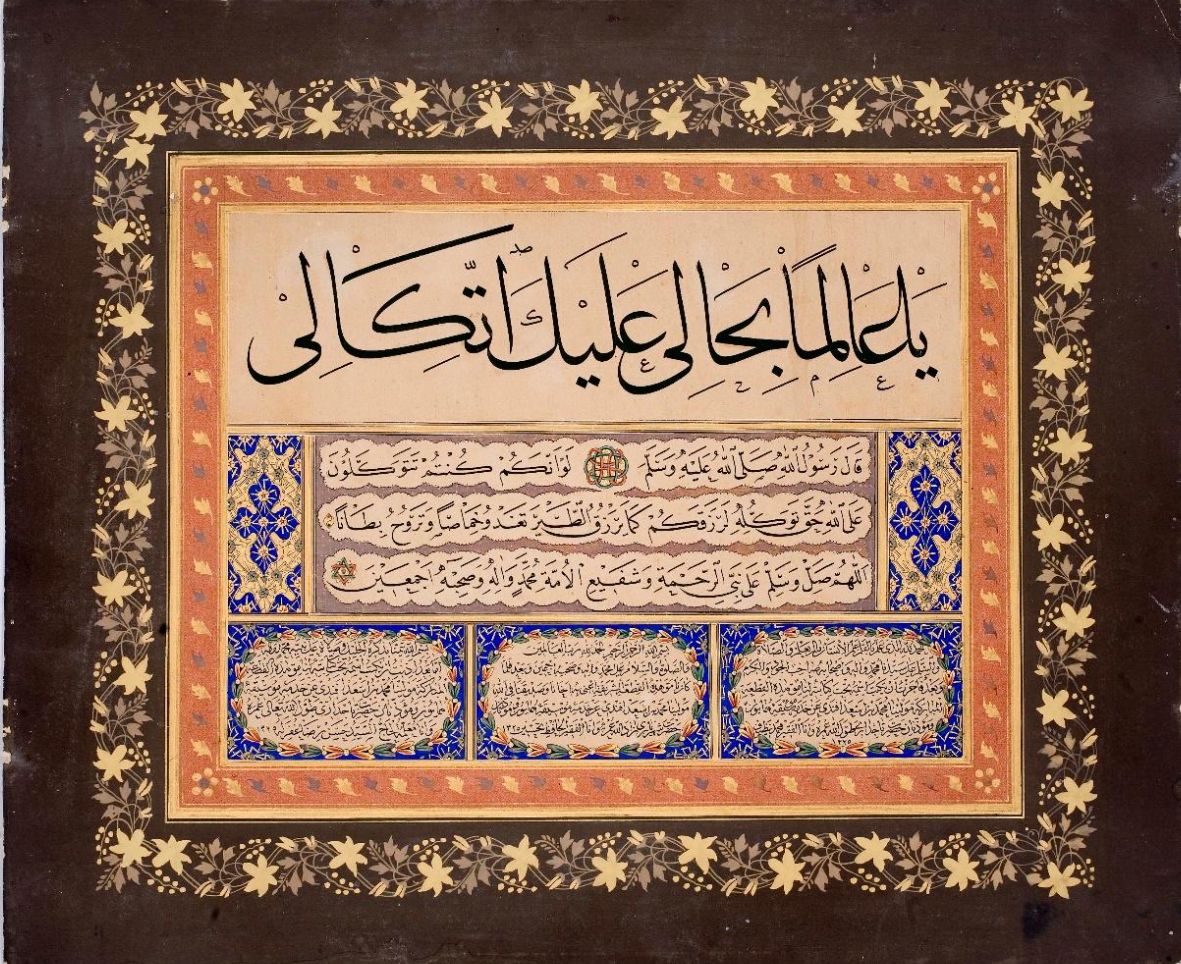
Icazetname (diploma) in thuluth-naskh (sülüs-nesih) written by Mehmed bin Esad Efendi (محمد بن أسعد أفندى), with permission (ijāzah or icâzet) granted and endorsed by masters Hasan Rıza (d.1920) and Mehmed Nazîf and certified by Hafız Hasan Tahsin Efendi. Dated 1325 AH (1907 CE). (Private Collection)
In general, the student receives an ijāzah from their master in whatever script they have practiced. It is common practice in calligraphy that the thuluth or sülüs (ثلث) and naskh or nesih (نسخ) scripts are taught together, while other scripts such as nastaʻlīq or talik (نستعليق), ta'lîq (تعليق ), and dîwânî (ديوانى) are taught separately.
Calligraphers' licenses or diplomas (icazetname) preserved in museums, libraries, and private collections exhibit slightly different practices depending on the period, location, type of script, and type of calligraphic piece produced. Contrary to common practice, the text of the icazetname included in the album of "Islamic Miscellaneous Calligraphies" (Khuṭūṭ-ı Mütenevviʿe-i İslāmiyye خطوط متنوعۀ اسلاميه) catalogued as Isl. Ms. 438 in the Islamic Manuscripts Collection at the University of Michigan Library, [1] is divided into two sequential parts spread across two illuminated folios.
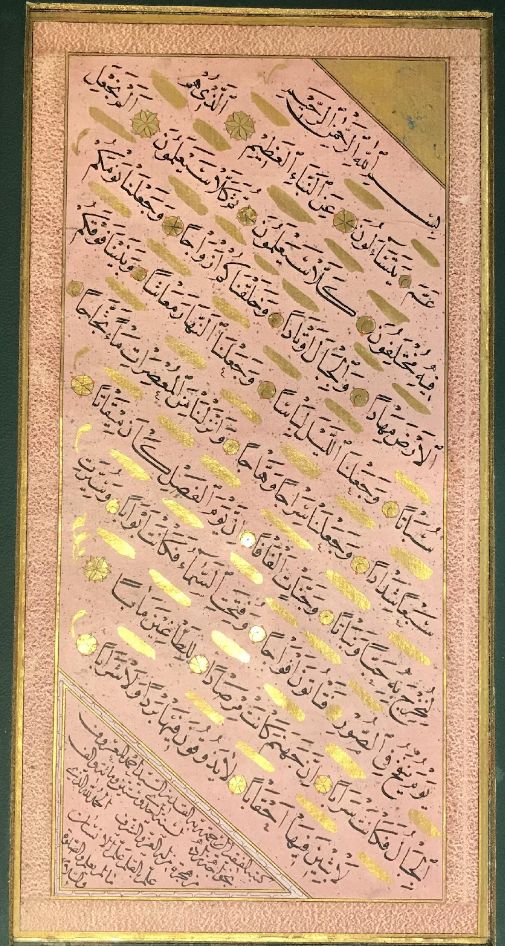
Opening part of an icazetname in naskh (nesih) for Seyyid Mustafa Efendi with signature of the master calligrapher granting the ijāzah or icazet — his teacher Hocazade Seyyid Ahmed (d.1759) — and date 1161 AH (1748 CE). Mounted in fol.17b of Isl. Ms. 438 (Islamic Manuscripts Collection)
The permission text is likewise divided and presented within triangular cornerpieces at the bottom of each of the two pages of calligraphy. This text indicates that the student who received the ijāzah was named Seyyid Mustafa Efendi and the master calligrapher who awarded the ijāzah in 1161 AH (1748 CE) was Seyyid Hocazade Ahmed Efendi.
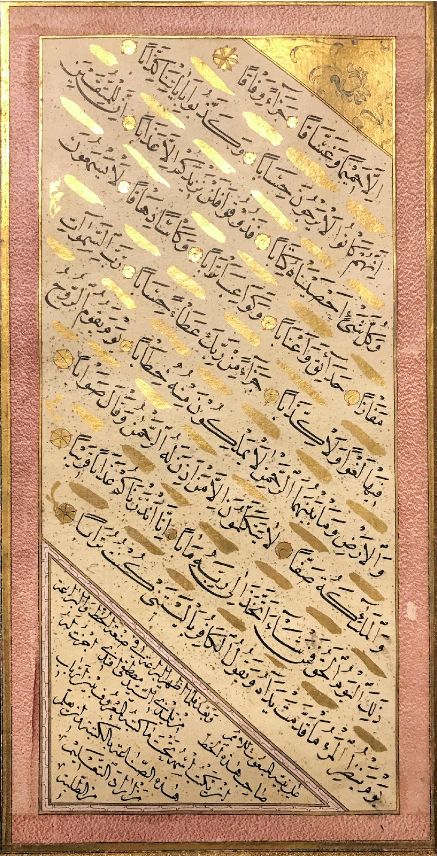
Second part of an icazetname in naskh (nesih) for Seyyid Mustafa Efendi, mounted in fol.21a of Isl. Ms. 438 (Islamic Manuscripts Collection)
The entire Sūrat al-Nabaʼ (سورة النبأ 78) was chosen for the calligraphic text in naskh (nesih) script. Another interesting aspect of this icazetname is that the text is written on the diagonal, a form that is not common today for the naskh script. A recent example of a similar icazetname granted ijāzah or icazet in the naskh script is the diploma awarded to Aydın Kızılyar by his teachers, the master calligraphers Mehmet Özçay and Osman Özçay. In this naskh piece, the entire Sūrat al-Nabaʼ has once again been written, evoking a practice from centuries earlier.
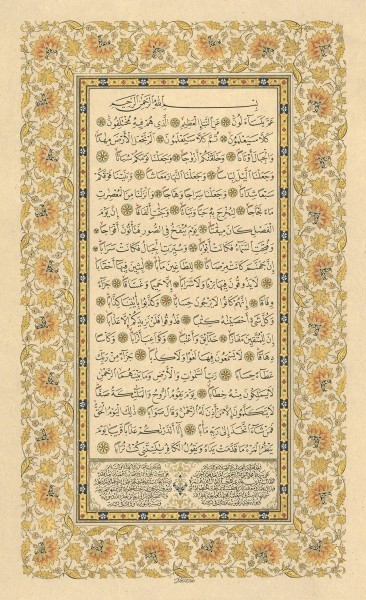
Icazetname in naskh (nesih) for Aydın Kızılyar, with ijāzah or icazet granted by his teachers Mehmed Özçay and Osman Özçay and dated 1436 AH (2014-2015 CE). (via Ketebe.org)
[1] The manuscript was acquired by the library in 1924 along with several hundred other manuscripts gathered in Istanbul that came to be known as the "Abdul Hamid Collection." More on that acquisition here.